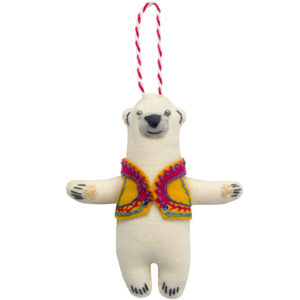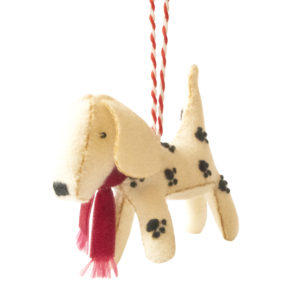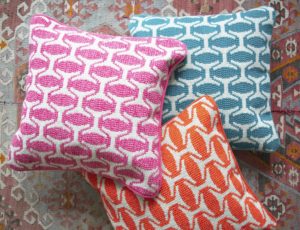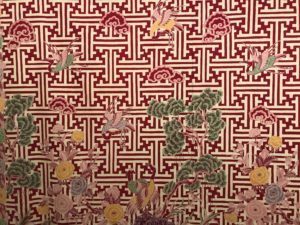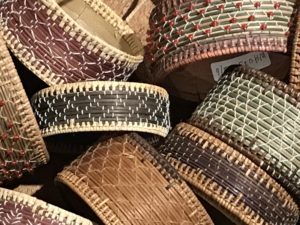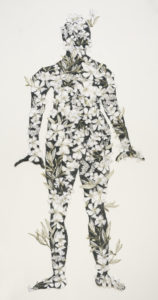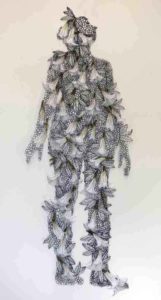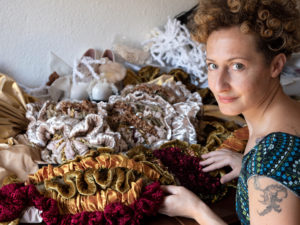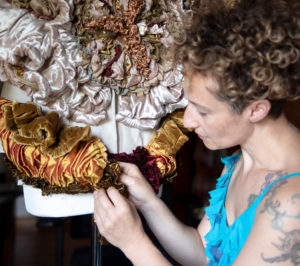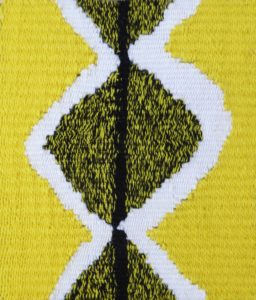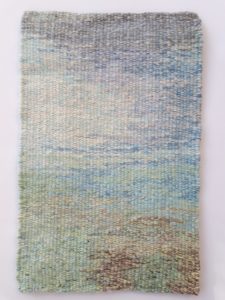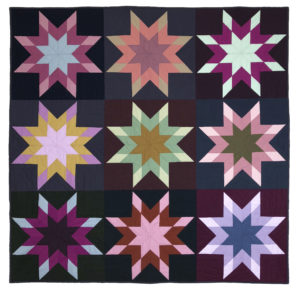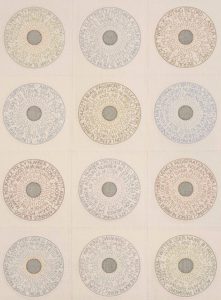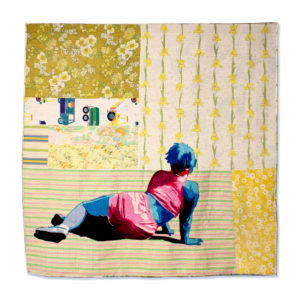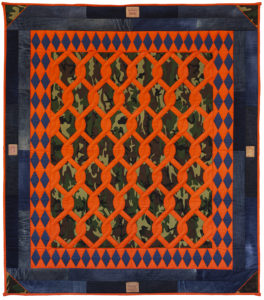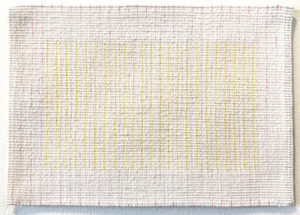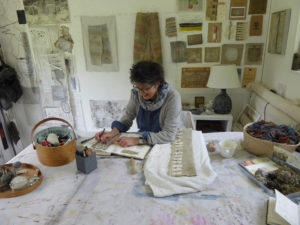Fine Cell Work – designs behind bars
Fine Cell Work: Christmas decorations, Ethiopian Hats Cushions and Emma Thompson Shakespeare quote embroidered cushion.
There is no doubt that embroidery can be therapeutic and the gratification that comes from hours of sewing is quietly rewarding. Embroidery and prisons don’t seem an obvious paring, but when Fine Cell Work brought the two together the match is nothing short of genius.
Fine Cell Work trains prisoners in needlework and pays them for their work. Not only can people learn a new skill and benefit from this mindful activity, but it can also foster self-esteem. Fine Cell Work is involved with thirty prisons throughout England and Wales and works with over 600 prisoners annually. Since it became a registered charity in 1997 there have been successful collaborations with numerous artists and designers ranging from Stella McCartney to AA Gill. I was curious about who designs the products, and how they manage to attract such a diverse list of people. I spoke to Katie Steingold the Events and Communications Manager to find out more.
How did Fine Cell Work start and when did it gain the momentum it has today?
Our Founder, Lady Anne Tree, was a prison visitor in the 60s and played a pivotal role in lobbying the government to allow prisoners to be paid for the work they carried out in prison. Fine Cell Work was not registered as a charity until the law changed, so we officially got off the ground in 1997. Paying prisoners for their work is core to our mission.
I know a lot of men do it but is it popular with women prisoners too?
The make-up of our work force is approximately 94% men, which is reflective of the prison population. One of the first questions we often get asked is whether men do this work “as well”, with the implication being that it is predominantly women. Historically though, men have always stitched – it was a popular pastime in the military, many of the big fashion houses were founded by men – providing you can put a thread through a needle and apply yourself to the craft, stitching knows no boundaries.
Which designers have you collaborated with?
We have been incredibly lucky with our design collaborations – Lady Anne was the daughter-in-law of Nancy Lancaster who founded Colefax and Fowler, so from the very beginning we have fortunate to have connections with prestigious designers and artists. Our collaborations include; Pentreath & Hall, Melissa Wyndham, Kit Kemp, Blithfield and Co., Nicky Haslam ,William Yeoward, Stella McCartney, Allegra Hicks, Daisy de Villeneuve, John Stefanidis, Emily Peacock. Ai Weiwei, Cath Kidston, Celia Birtwell, Karen Nicol, Cressida Bell, Margo Selby, Luna and Curious, AA Gill, Ashley Hicks, Hazel Townsend, Charlene Mullen.
AA Gill isn’t usually associated with the design world. How did that come about?
In the early days of Fine Cell Work, our founder’s daughter set up an event for us whereby celebrities gave us a design to stitch and auction. We received designs from actor Ralph Fiennes, the then Home Secretary Jack Straw, Mick Jagger to name a few, and AA Gill was part of this. His design really resonated with us and we decided to make it a permanent part of our core stock items. AA Gill once commented on how much he appreciated the contrast between “hard men and soft furnishings” – we quote him on that a lot!
How do the collaborations work?
Our collaborations tend to be quite organic – often we meet designers/artists at events or through mutual connections and conversations develop from there. Sometimes designers are looking for us to produce something that they can then sell to their own customers, other times they want to design something to be included in our range and occasionally, a bit of both.
Part of the challenge when introducing new designs to our workforce is ensuring we are meeting the therapeutic need as well as the commercial need. We produce kits for beginners, intermediate and advanced stitchers, and need to make sure that we have a range of designs and varied work which allows us to keep all of our stitchers busy.
Can prisoners create their own designs?
Our core collection of products is selected by our design committee, supported by our production and sales teams – and this needs to remain the case in order to make our products commercially viable. However, there are some products which allow for more creativity – for example, our popular needlepoint geometric cushion gives stitchers the choice over how to arrange colours and patterns, and our house tea cosies allow complete free reign. We also sometimes have one-off projects which give our stitchers creative license within a set brief, such as Tracy Chevalier’s Sleep Quilt commission, or a project we did with SSAFA to commemorate the centenary of WW1.
How long does a Christmas Decoration take to complete?
Our Christmas Decorations take an average of 20 hours to complete.
How long does the average cushion take to complete?
An average cushion has 40,000 stitches and can take 120-150 hours to stitch, although some can take much longer.
What is next for Fine Cell Work? Are there any exciting collaborations coming up?
We have a really exciting project which we are about to announce, involving collaborations with eight high profile artists which will be exhibited at Sotheby’s next Spring. Unfortunately, we’re not allowed to say too much about it just yet, but keep your eyes peeled for that one!
We are also working on new designs with Pentreath & Hall and Studio Ashby, developing a new travel range and working on an exclusive collaboration with the William Morris Society which we can’t wait for.



